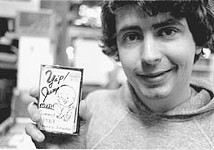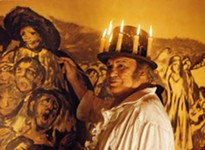Book Smarts
New academic tomes explore diverse film genres
By Will Robinson Sheff, Fri., July 26, 2002

Comedy Is a Man in Trouble: Slapstick in American Movies
by Alan S. DaleUniversity of Minnesota Press, 288pp., $18.95 (paper)
It's difficult to intellectually analyze a slapstick gag without killing a vital part of what made it funny in the first place. Yet Alan Dale, in this brief analysis of the highest points of American slapstick cinema's first 50 years, somehow manages to render in prose both what's funny and what's resonant about the best slapstick without coming off as too much of a stuffed shirt. Comedy Is a Man in Trouble is peppered with bits that make you laugh out loud, either at some remembered gag, Dale's terse summation of a gag you've never seen, or -- rarest and most precious of all -- the nugget of buried truth that makes the best gags timeless.
Dale's book moves chronologically, skimming lightly (almost, at times, too lightly) through the first half-century of American slapstick, from the Mack Sennett two-reelers that made names of Keaton, Chaplin, and Arbuckle to Lewis and Martin's churned-out oeuvre. Along the way, he rightly mocks the cloying sentimentality that marked Chaplin's egoistic bid to become a "serious" artist while rendering him unfunny; champions the underappreciated Harold Lloyd; explains how the Marx brothers were, happily, too anarchic to be properly considered satirists; and makes a convincing case that Jerry Lewis -- while as annoying as you think -- might also be funnier than you think.
Throughout, Dale underlines his profound main point -- that slapstick represents a comic making-of-peace with the thousand natural shocks that flesh is heir to. But Dale never becomes so insistent with the philosophy that he deadens the gag at hand, remembering that the best slapstick is never conceived as philosophy, as "high art," or as anything other than fun. Slapstick may tickle a few metaphysical nerves, but first and foremost it makes us laugh, hard and from the belly. For this reason it's the most accessible dramatic form -- a tradition, enjoyed by both truck drivers and college professors, that can be traced all the way from Aristophanes to Adam Sandler.








